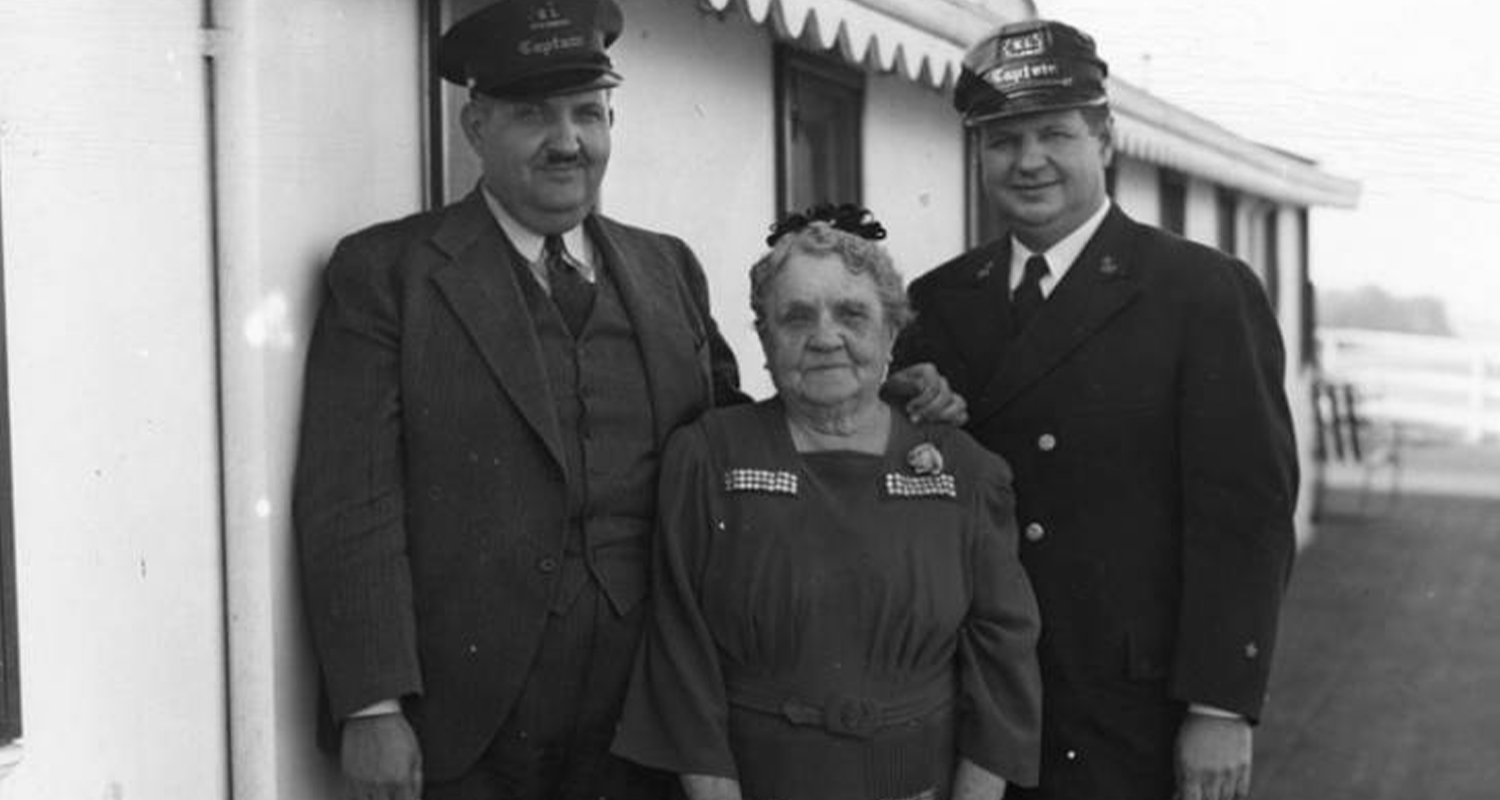“When you marry a riverman, you marry the river too. That’s the code of steamboatin’.”
-Mary B. Greene
Owning steamboats and being a river captain in the late 1800s was not the most glamorous of lifestyles. The work was hard, competition among other steamers was tough, free time was almost nonexistent, and navigating the Ohio River before locks and dams was an artform.
To many in the public at that time, it was a man’s world. On the Ohio River, every steamboat company was owned, operated, piloted, and crewed by men – except one: Greene Line Steamers.
Captain Mary B. Greene, co-owner of Greene Line Steamers with her husband Captain Gordon C. Greene, was much larger in life than her mere five-foot tall figure. And it was in Wheeling, WV that this “petticoat skipper” took command of her first vessel in 1897, leading to a storied 50 plus year career on the Ohio River.
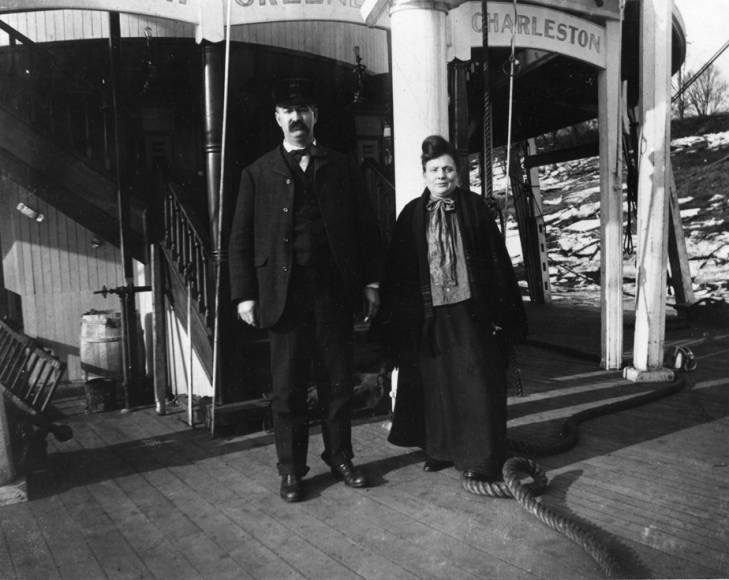
Raised by the River
Mary Becker was born in 1868 along the banks of the Muskingum River about six miles north of Marietta, Ohio.
Growing up, Mary became fascinated with weather patterns and river conditions, which she quickly caught on to and understood. Little did she know, this acquired knowledge would be invaluable to the career she was someday to enjoy.
Mary would eventually be introduced to her future husband Gordon by a mutual friend. Gordon was a riverman through and through – quite the perfect match for a young woman who held similar interests and knowledge of the river.
By 1890, the couple were married and soon settled into their primary floating residence aboard their steamer, the H.K. Bedford. While the couple did in fact have a land-based residence in Newport, Ohio (which still stands to this day), their strong work ethic and management style kept them on their vessels where they could oversee the operations front and center.
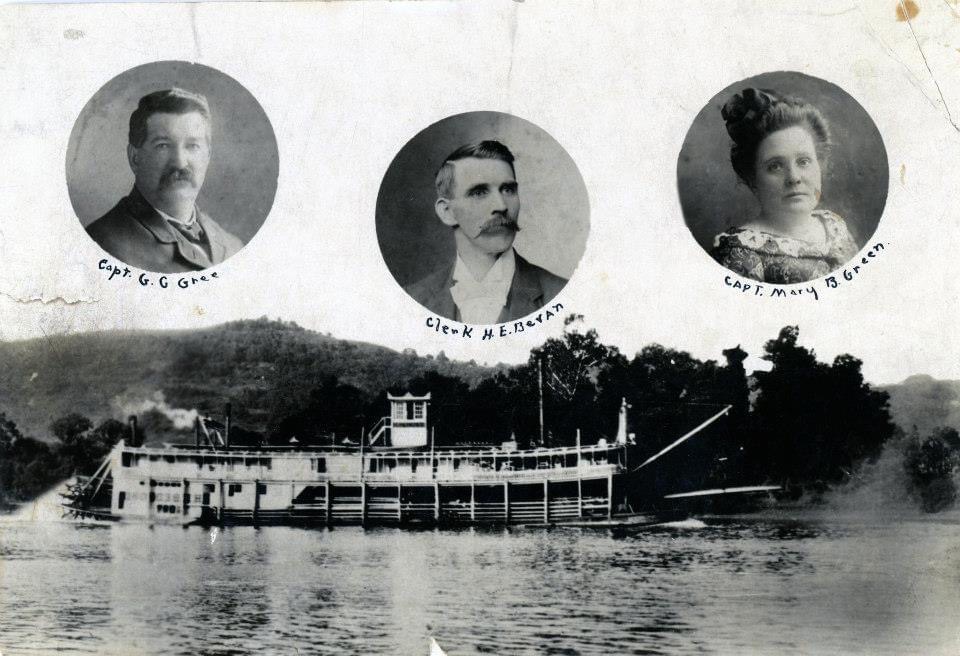
A Lady’s Touch
In the eyes of many rivermen, women were to be passengers, not crew. This is something many crewmen felt strongly about as it was an old-world superstition that a female crew member was bad luck. Yet, that was no deterrence to Mary who brushed such notions aside. To her, if the work needed done gender was no barrier.
By 1892, Mary’s experience in steamboat operations alongside her husband paved the way for her to obtain her master’s pilots license making her the only female captain on the Ohio River. Nothing could be further outside the norm for a Victorian woman than to become a steamboat captain before she became a mother.
At the same time, the Greene Line had expanded so much that Gordon ordered the construction of a new steamer named the Argand for the Wheeling-Parkersburg trade route. The new vessel would join the H.K. Bedford but it was not be the profitable success the Greene’s had hoped for at first.
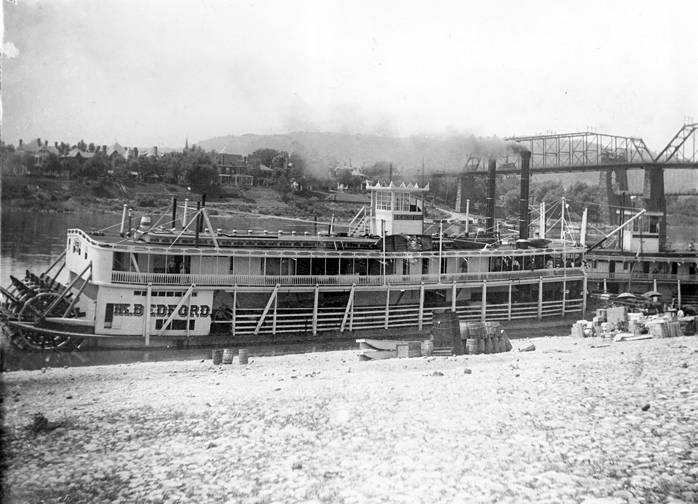
While in Wheeling in 1897, Mary had seen all she needed to and was tired of the profit loss. She’d had her master’s license a whole five years by that time and decided to take command of the Argand in her own right. Gordon, resigned to the fact that he could not afford to hire a pilot, agreed to the proposal. The small but mighty lady organized the crew and departed the city on what would be a hugely successful roundtrip to Parkersburg and back. Within six months the vessel alone earned $2,500 in profits.
According to the Wheeling Daily Intelligencer, Mary was quoted as saying she didn’t intend to actually pilot the vessel but was there to “help the captain when he is on watch, or take the wheel for a while for amusement if I like.”
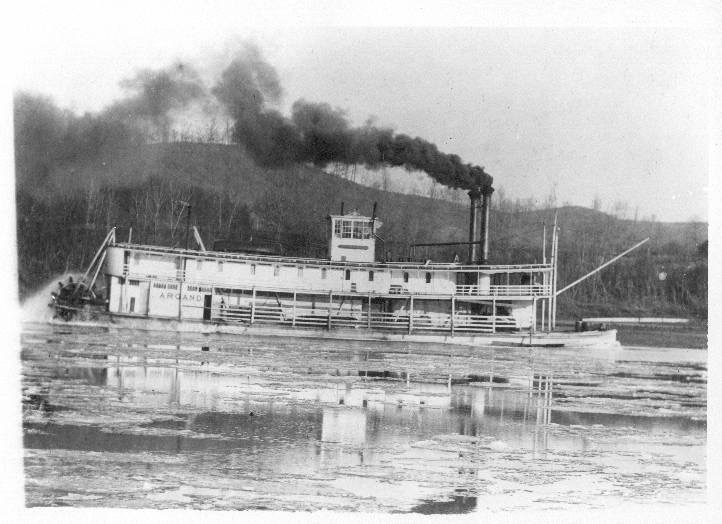
To avoid the attention of people bewildered at the sight of a female captain, Mary often took her turn behind the wheel during the night hours. However, her attempts at shunning the limelight were short lived. Anyone who knew anything about the river soon knew the name Mary B. Greene.
As a lady, she approached operating a boat in much the same way a house was run. While nearly every other packetboat company concerned itself with speed and little focus on comfort, Mary approached the business in a different way. She took great pride in her vessel being kept clean, orderly, and running smoothly. When she wasn’t behind in the pilothouse, she was sewing curtains and other linens. But more importantly, Mary well knew the key to gaining passengers and keeping them was comfort and reliability from the Greene Line.
Unlike other steamers, Greene Line Steamers enjoyed high praise for its meal service and comfortable cabins. In doing so, she single-handily helped transform the Greene Line from a once-primitive business into a reputable company attracting a higher end clientele who came to expect nothing less than what Mary Greene had to offer.
Expanding the Family and the Business
A successful company also made for a successful marriage and one that was also filled with fun-loving antics and competition. One such occasion was when Mary and Gordon decided to race their own steamers from Pittsburgh to Cincinnati in 1903. Taking the lead and winning the race by arriving into the Queen City, the five-foot-tall feisty lady’s already rising fame skyrocketed to new heights.
Within a year of Mary taking the helm of the Argand, she and Gordon were soon planning the arrival of their newest boat, the Greenwood and only just a few years later its first luxury steamer, the Greenland. Costing a whopping $40,000 at the turn of the century, the new 215-foot vessel boasted over 50 staterooms.
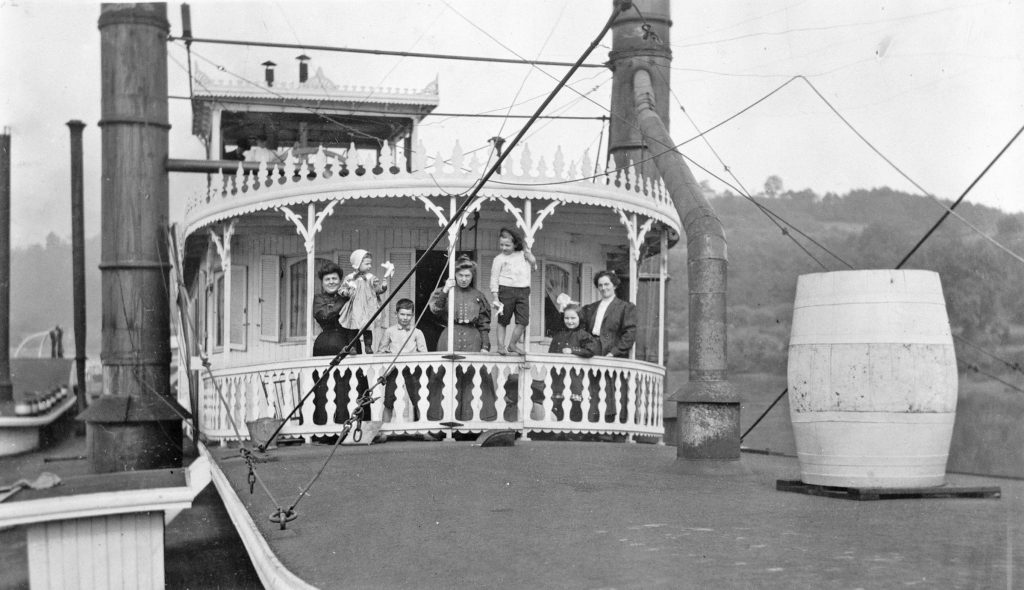
However, not only were they expanding the number of boats but also the number of Greene’s. Included on the Greenland when it was constructed was a special suite of five rooms for Gordon and Mary. By this point, Mary was not only in command of her own vessels but was also raising two young sons, Tom and Chris.
Always considering how to increase business, Mary and Gordon decided in 1904 to sell tickets for the first-of-its-kind excursion cruise from Pittsburgh to St. Louis for the World’s Fair that was being held in the city. With the Greene family’s touch and weather that was nothing short of perfection, the trip was a huge success.
Mary recalled of that trip, “It was early in May in the year 1904 that we left Pittsburgh with a full passenger list. Fortunately, the weather was perfect, no rain or storms marred the pleasure of our cruise. Our youngest son, Tom, was but three months old, so you can well imagine that my time was pretty well taken up with the care of this young man and the duties required of the Captain… The passengers used the boat as their hotel, starting out early each morning for the Fair. In reality, I didn’t miss much of the Fair, for what I didn’t see was told to me by the passengers when they returned dead tired to the boat each evening.”
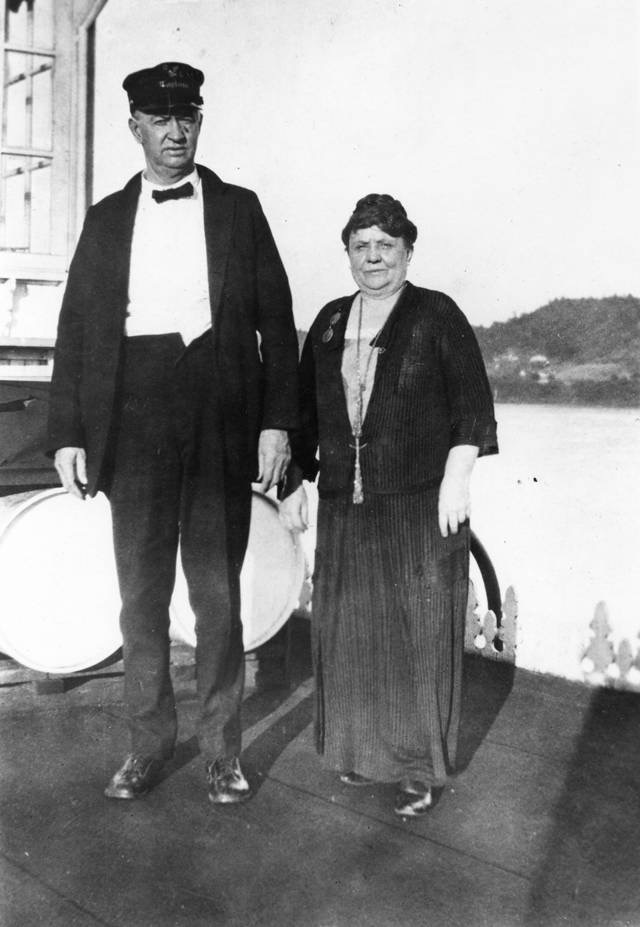
The early 1900s undoubtedly proved to be successful years for the Greene Line as the family continued to add additional boats to their fleet. The business move only further cemented the Greene Line name as the premier steamboat company. And it was because of Mary’s charms and notoriety that the Greene Line boats enjoyed sell-out cruises on the Ohio, Mississippi, Cumberland, and Tennessee Rivers for years to come.
The Consummate Hostess
While many successes were enjoyed, heartache also found its way into Mary’s life with the loss of Gordon in 1927. By this time the family had moved operations to Cincinnati where the Greene Line was headquartered.
When it came time to return her late husband’s body home for interment in the family plot in Newport, Ohio, it was Mary who was at the helm of their steamer, the Tom Greene, named after one of their sons, when it arrived at the landing.
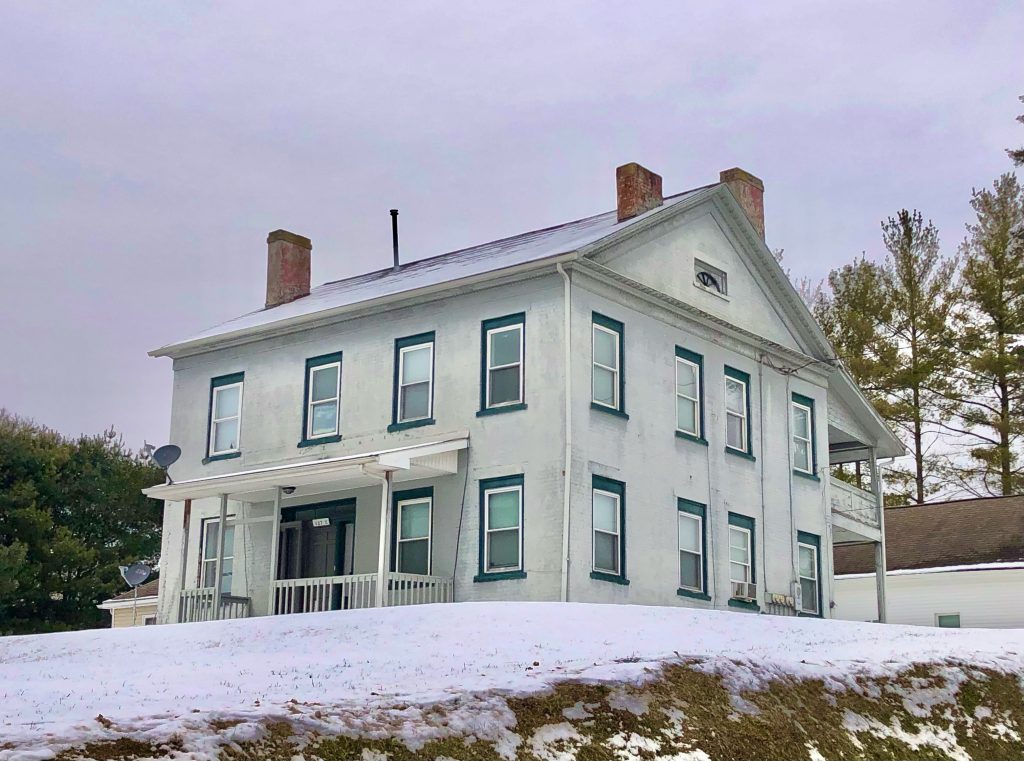
The onset of the Great Depression in 1929 spelled further gloom not only for the Greene Line but also many steamboat companies. Down to only two steamers, Mary and her sons Tom and Chris considered an uncertain future. Ever the optimist, she vowed to continue on with business and the life she came to know saying, “Once you ride between two stacks, you’re doomed to ride upon a river craft until you’re tombed.”
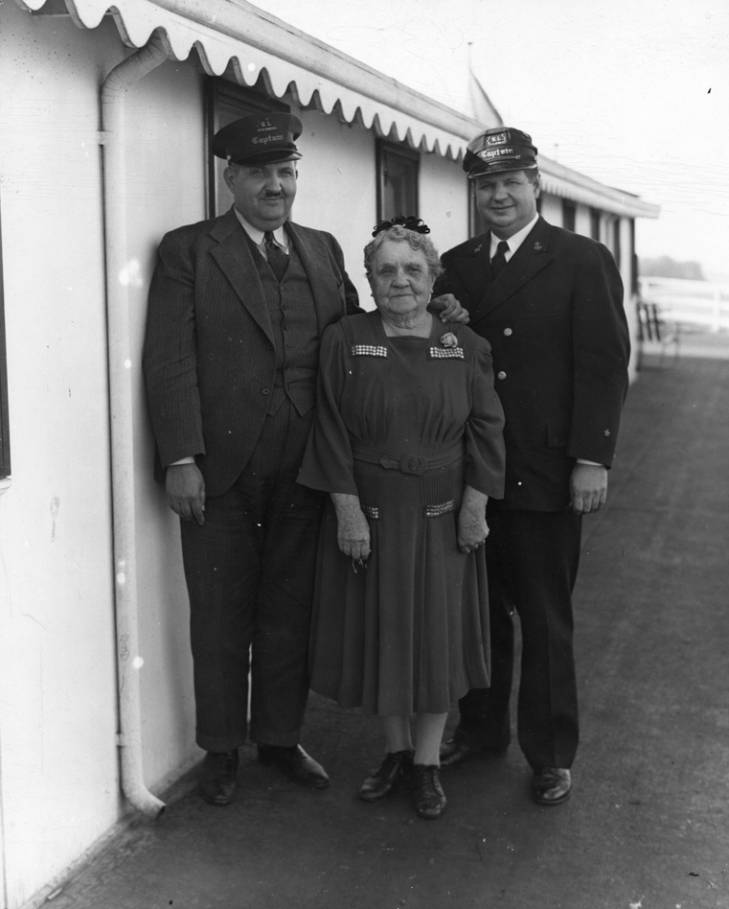
Her optimism paid off when, in 1935, the family purchased the steamer Cape Girardeau and renaming it after her late husband. The new Gordon C. Greene was renovated and soon had accommodations for 175 passengers and 60 crew. Inside, the steamer boasted a large main cabin where dining was enjoyed three times a day and became the social epicenter of the steamer. Assuredly, Mary was the consummate captain and hostess going from table to table greeting her beloved passengers and enjoying the social dancing held there.
The successes of the Gordon C. Greene would soon pave the way for the family to buy what would arguably become the most famous steamboat in the world.
In Part 2, learn more about Mary B. Green’s later years and her lasting legacy.
• Taylor Abbott is the treasurer of Monroe County, Ohio, and was born in Wheeling, West Virginia. He is a graduate of Ohio University and is co-founder and president of the Ohio Valley River Museum. He serves on the board directors for the Sons & Daughters of Pioneer Rivermen and is an advisor to the Ohio River Museum in Marietta, Ohio. He enjoys hiking, travel, historic preservation and restoration work. Taylor resides in Clarington, Ohio, with his wife Alexandra in a former church they purchased in 2016 and renovated into their home.


